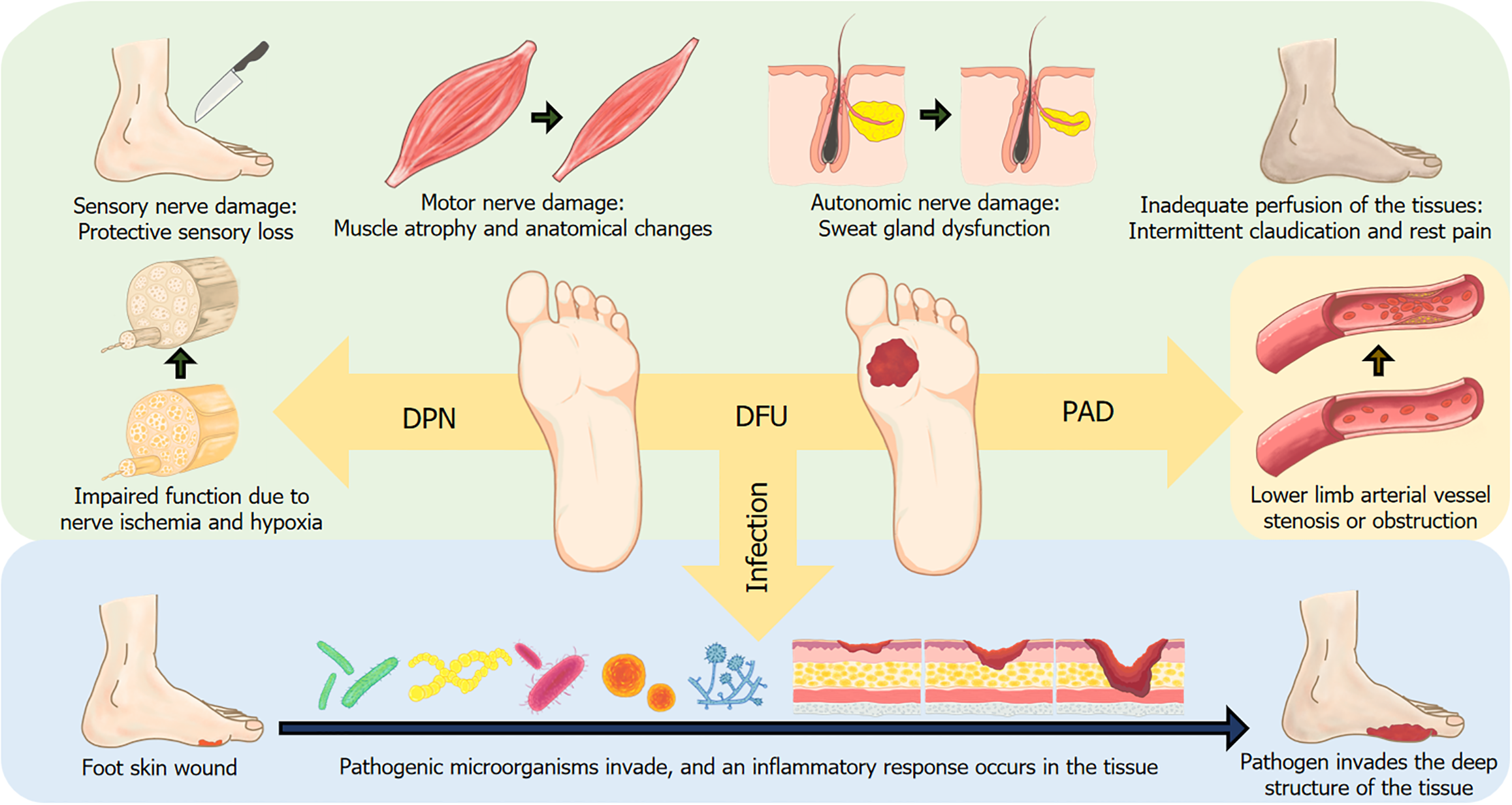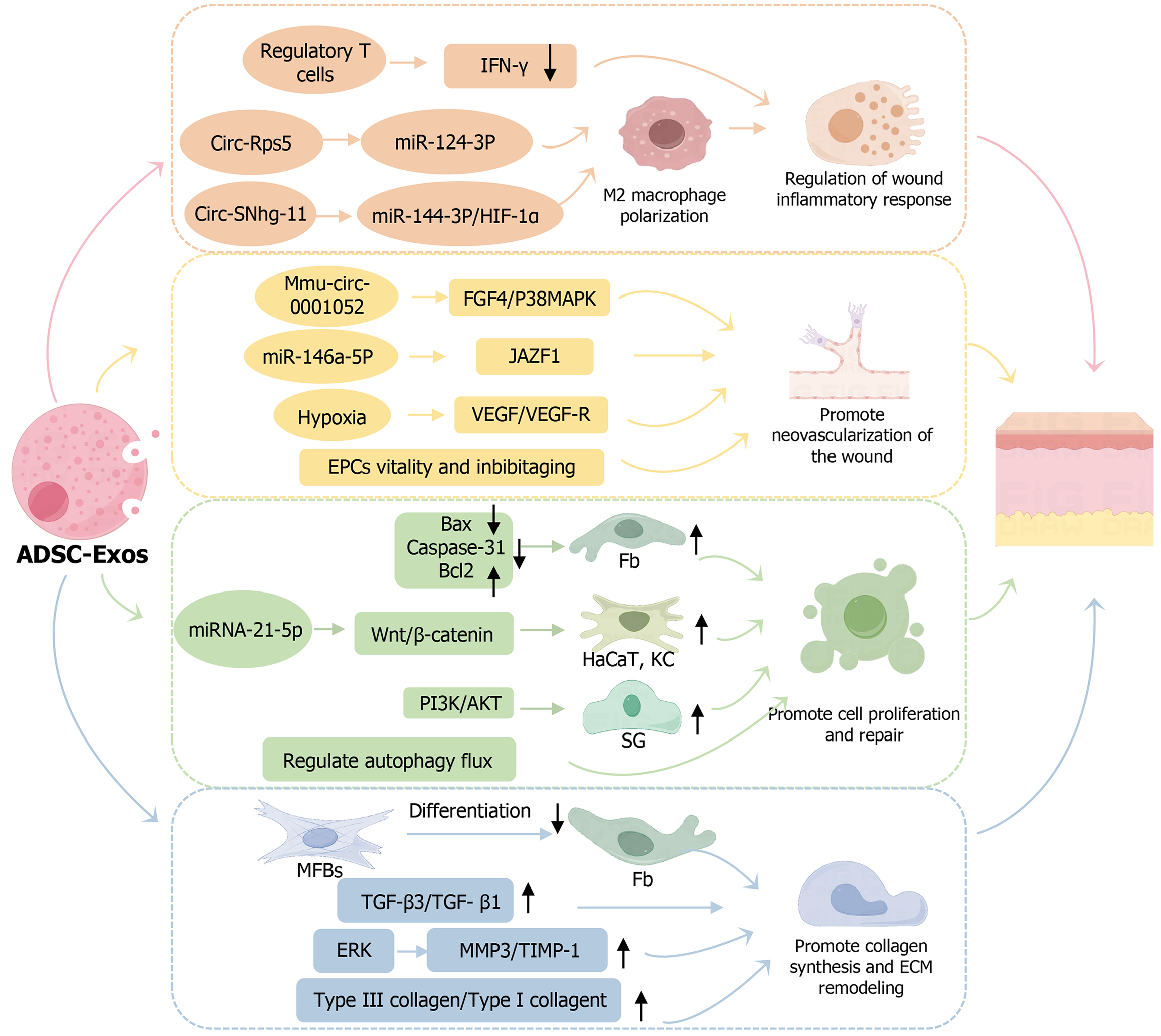Copyright
©The Author(s) 2025.
World J Diabetes. Oct 15, 2025; 16(10): 109763
Published online Oct 15, 2025. doi: 10.4239/wjd.v16.i10.109763
Published online Oct 15, 2025. doi: 10.4239/wjd.v16.i10.109763
Figure 1 Risk factors for diabetic wound healing.
The interaction of multiple risk factors prevents normal healing of diabetic wounds. The most important risk factors are diabetes-related peripheral neuropathy, peripheral artery disease, and infections. DPN: Diabetes-related peripheral neuropathy; DFU: Diabetic foot ulcer; PAD: Peripheral artery disease.
Figure 2 Mechanisms of exosomes from adipose-derived stem cells in promoting diabetic wound healing.
The mechanisms by which exosomes from adipose-derived stem cells promote wound healing in refractory diabetes mellitus may include the regulation of inflammation, promotion of wound neovascularization, enhancement of cell proliferation and repair, and promotion of collagen synthesis and extracellular matrix remodeling. IFN: Interferon; HIF: Hypoxia-inducible factor; FGF4: Fibroblast growth factor 4; MAPK: Mitogen-activated protein kinase; JAZF1: Juxtaposed with another zinc finger gene 1; VEGF: Vascular endothelial growth factor; VEGFR: Vascular endothelial growth factor receptor; EPCs: Endothelial progenitor cells; Bcl-2: B-cell lymphoma-2; Fb: Fibroblast; HaCaT: Human keratinocyte cell line; KC: Keratinocytes; SG: Sebaceous gland; PI3K: Phosphatidylinositol 3-kinase; AKT: Protein kinase B; ADSC-Exos: Exosomes from adipose-derived stem cells; MFBs: Myofibroblasts; TGF: Transforming growth factor; ERK: Extracellular signal-regulated kinase; MMP: Matrix metalloproteinase; TIMP: Tissue inhibitor of metalloproteinase; ECM: Extracellular matrix.
- Citation: Mao JX, Chen S, Li JC, Wang H, Zhao MX. Exosomes from adipose-derived stem cells: A potential therapeutic strategy for diabetic foot ulcers. World J Diabetes 2025; 16(10): 109763
- URL: https://www.wjgnet.com/1948-9358/full/v16/i10/109763.htm
- DOI: https://dx.doi.org/10.4239/wjd.v16.i10.109763














